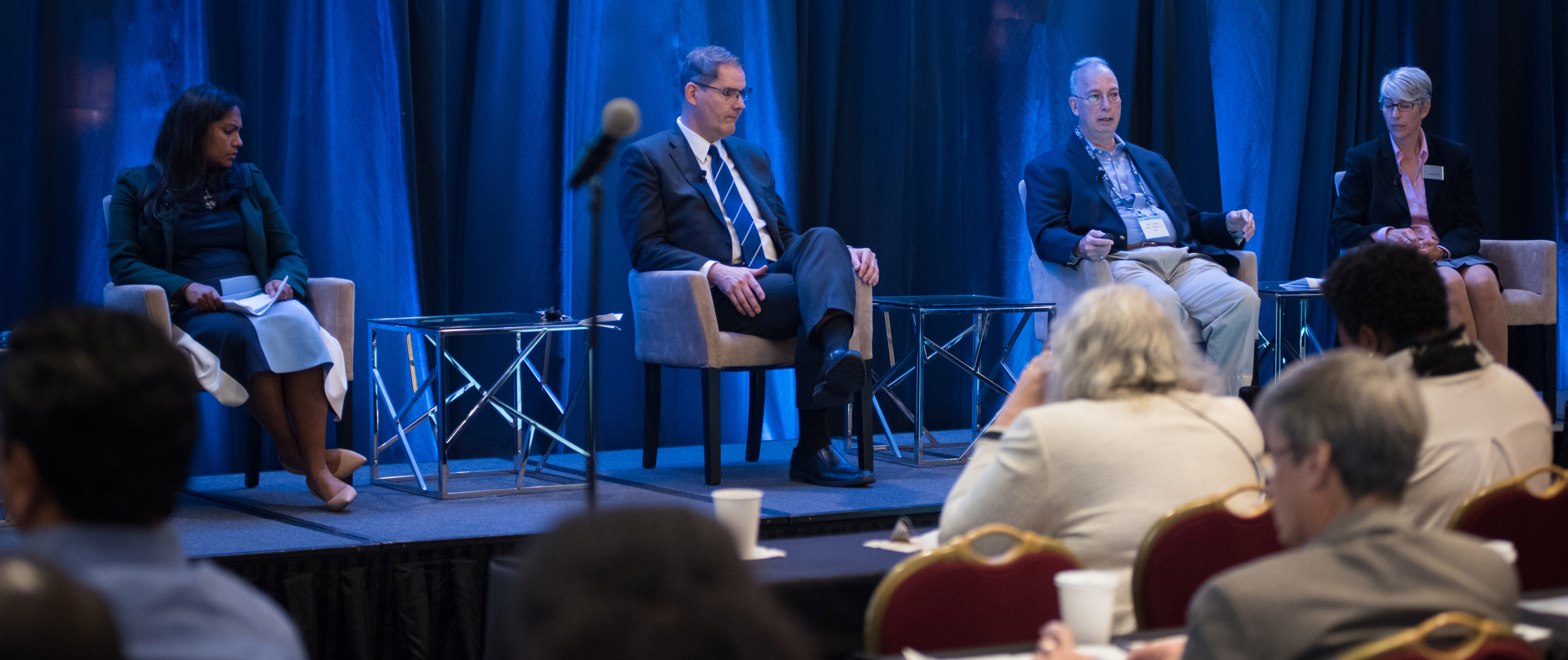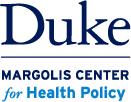
Real-world evidence on treatment outcomes can be an important aspect of the evidence basis for decision making if it is seen as credible. For real-world studies that are meant to test hypotheses about comparative-effectiveness or safety, a key aspect of credibility is that they are conducted transparently with tests that follow a prespecified analytic protocol. Preregistration of such study protocols on a public website would help build trust that their results can be used for decision-making purposes.
Establishing a Culture of Transparency for Real-World Evidence Studies...
The Real-World Evidence Transparency Initiative Partnership is a joint collaboration and ongoing effort between ISPOR, the International Society for Pharmacoepidemiology, the Duke-Margolis Center for Health Policy, and the National Pharmaceutical Council. The objective of this initiative is to establish a culture of transparency for study analysis and reporting of hypothesis evaluating real-world evidence studies on treatment effects.
Improving Transparency to Build Trust...
 The Real-World Evidence Transparency Initiative published a plan to encourage routine registration of noninterventional real-world evidence studies used to evaluate treatment effects. The report, “Improving Transparency to Build Trust in Real-World Secondary Data Studies for Hypothesis Testing—Why, What, and How: Recommendations and a Road Map from the Real-World Evidence Transparency Initiative,”
was published in the September 2020 issue of Value in Health.
The Real-World Evidence Transparency Initiative published a plan to encourage routine registration of noninterventional real-world evidence studies used to evaluate treatment effects. The report, “Improving Transparency to Build Trust in Real-World Secondary Data Studies for Hypothesis Testing—Why, What, and How: Recommendations and a Road Map from the Real-World Evidence Transparency Initiative,”
was published in the September 2020 issue of Value in Health.
More...
The report, “Improving Transparency to Build Trust in Real-World Secondary Data Studies for Hypothesis Testing—Why, What, and How: Recommendations and a Road Map from the Real-World Evidence Transparency Initiative,” was published in the September 2020 issue of Value in Health. The plan includes specifying the rationale for registering hypothesis-evaluating treatment effectiveness real-world evidence studies, the studies that should be registered, where and when these studies should be registered, how and when analytic deviations from protocols should be reported, how and when to publish results, and incentives to encourage registration.
Real-World Evidence Registry
The Real-World Evidence Registry provides researchers with a fit-for-purpose platform to register their study designs before they begin work to facilitate the transparency needed to elevate the trust in the study results.
More...
Real-world evidence studies can be used for hypothesis evaluation of treatment effects including safety (HETE studies). However these studies can also be perceived as less rigorous than clinical trials especially when not preregistered in a public setting such as ClinicalTrials.gov or the EU-PAS register.
ISPOR and its partners ISPE, NPC, and Duke Margolis have developed a simplified registration site especially for RWE HETE studies using secondary data. This searchable site provides a place for preregistration of studies that may not require registration for regulatory purposes but benefit from the rigor of transparent study methods and also provide a reference (such as a URL or doi) to share with peer reviewers, assessors, or other decision making bodies. Researchers can get started ‘here’ by creating a profile on the Open Sciences Framework and registering their study on the RWE Registry.
Shaking the Myth of Real-World Evidence
On-Demand Webinar
Learn more by watching the on-demand webinar, “Shaking the Myth of Real-World Evidence: Updates from the RWE Transparency Initiative.” This session provides updates from the initiative including a walk-through of the study registration site and updates on the special task force developing a standardized RWE protocol template.
Additional Resources
- Real-World Evidence Registry
 Good Practices Reports and Other ISPOR Reports from Value in Health
Good Practices Reports and Other ISPOR Reports from Value in Health
- HARmonized Protocol Template to Enhance Reproducibility of Hypothesis Evaluating Real-World Evidence Studies on Treatment Effects: A Good Practices Report of a Joint ISPE/ISPOR Task Force
- "Improving Transparency to Build Trust in Real-World Secondary Data Studies for Hypothesis Testing—Why, What, and How: Recommendations and a Road Map from the Real-World Evidence Transparency Initiative"
- "Good Practices for Real-World Data Studies of Treatment and/or Comparative Effectiveness"
- "Reporting to Improve Reproducibility and Facilitate Validity Assessment for Healthcare Database Studies V1.0"
- "Unlocking the Promise of Real-World Evidence" (Value & Outcomes Spotlight, Vol. 6, No. 5)
- ISPOR's Real-World Evidence Strategic Initiatives
Conferences & Summits

December 10, 2024
<p><a href="/education-training/webinars">Back to all webinars</a></p><p><strong>Title: </strong>MASLD/MASH: Clinical and Economic Findings from 40-year Follow-Up Data</p><p><strong>Tuesday, December 10, 2024</strong></p><p>9:00AM EST |1:00PM UTC | 3:00PM CEST</p><p><a href="https://www.timeanddate.com/worldclock/fixedtime.html?msg=MASLD%2FMASH%3A+Clinical+and+Economic+Findings+from+40-year+Follow-Up+Data&iso=20241210T09&p1=179&ah=1" target="_blank" data-sf-ec-immutable="" data-sf-marked="">Click here for time zone conversion </a></p><p><br /><a href="https://portal.ispor.org/eweb/DynamicPage.aspx?webcode=EventInfo&Reg_evt_key=36e7d087-2fb9-44b3-941a-1fe835cbd87d&RegPath=EventRegNoFees&FreeEvent=1&Event=ISPOR%20Webinar:%20MASLD/MASH:%20clinical%20and%20economic%20findings%20from%2040-year%20follow-up%20data&FundraisingEvent=0&evt_guest_limit=0" class="button primary" data-sf-ec-immutable="" target="_blank">Register Now</a></p><p><strong> </strong></p><p><strong>Description:</strong></p><p>Metabolic dysfunction-associated steatotic liver disease (MASLD) is initially characterized by simple steatosis but can progress to metabolic dysfunction-associated steatohepatitis (MASH), characterized by the histological observation of steatosis, hepatocellular ballooning, and inflammation.</p><p>Patients with MASLD are at risk of cardiovascular events and hepatic manifestations, and have an elevated mortality risk. Several European and US studies have demonstrated that healthcare costs for patients with MASLD are higher than those for age-matched controls and that patients with more advanced MASLD (e.g. MASH) consistently incur higher direct and indirect healthcare costs and have greater healthcare resource utilization (HCRU) than those at a less advanced stage of MASLD.</p><p>Given the chronic nature of MASLD, it is vital to understand the drivers for long-term clinical outcomes, high costs and HCRU to help inform disease awareness, identify at-risk patients early and initiate treatment to prevent disease progression and minimize clinical and economic burden.</p><p>In this webinar, we explore the findings of the BRIDGE-MASH study, assessing clinical and economic outcomes in a cohort of patients with an unprecedented follow-up period of more than 40 years.</p><p> </p><p><strong>Learning Objectives:</strong></p><p>1. Gain an understanding of the clinical, HCRU and cost burden of MASLD and MASH.</p><p>2. Recognize the patient characteristics that increase the risk of long-term clinical outcomes and high costs/HCRU.</p><p>3. Gain an understanding of how clinical outcomes and costs could be reduced through timely diagnosis and improved access to treatment.</p><p> </p><p><strong>Moderator:</strong></p><p><strong>Riku Ota, MPH</strong><strong>,</strong> Global Payer Evidence Lead, Novo Nordisk A/S, Søborg, Copenhagen, Denmark</p><p> </p><p><strong>Speakers:</strong></p><p><strong>Hannes Hagström, MD, </strong>Professor, Karolinska Institutet, Stockholm, Sweden</p><p><strong>Ying Shang, MD,</strong> Assistant Professor, Karolinska Institutet, Stockholm, Sweden</p><p><strong>Emilie Toresson Grip, MSc,</strong> Director, Head of RWE and Data Analytics, Quantify Research, Stockholm, Sweden</p><p><strong> </strong></p><p><strong>Brought to you by: </strong><a href="https://www.novonordisk.com/disease-areas/mash.html" target="_blank" data-sf-ec-immutable="">Novo Nordisk</a></p><p><strong>Please note:</strong> On the day of the scheduled webinar, the <strong>first 1000 registered participants</strong> will be accepted into the webinar. For those who are unable to attend, or would like to review the webinar at a later date, the full-length webinar recording will be made available at the <a target="_blank" href="/education-training/webinars">ISPOR Educational Webinar Series webpage</a> approximately 2 days after the scheduled Webinar. Reservations are on a first-come, first-served basis.</p>)
Short Courses & Webinars

December 10, 2024
<p><a href="/education-training/webinars">Back to all webinars</a></p><p><strong>Title: </strong>MASLD/MASH: Clinical and Economic Findings from 40-year Follow-Up Data</p><p><strong>Tuesday, December 10, 2024</strong></p><p>9:00AM EST |1:00PM UTC | 3:00PM CEST</p><p><a href="https://www.timeanddate.com/worldclock/fixedtime.html?msg=MASLD%2FMASH%3A+Clinical+and+Economic+Findings+from+40-year+Follow-Up+Data&iso=20241210T09&p1=179&ah=1" target="_blank" data-sf-ec-immutable="" data-sf-marked="">Click here for time zone conversion </a></p><p><br /><a href="https://portal.ispor.org/eweb/DynamicPage.aspx?webcode=EventInfo&Reg_evt_key=36e7d087-2fb9-44b3-941a-1fe835cbd87d&RegPath=EventRegNoFees&FreeEvent=1&Event=ISPOR%20Webinar:%20MASLD/MASH:%20clinical%20and%20economic%20findings%20from%2040-year%20follow-up%20data&FundraisingEvent=0&evt_guest_limit=0" class="button primary" data-sf-ec-immutable="" target="_blank">Register Now</a></p><p><strong> </strong></p><p><strong>Description:</strong></p><p>Metabolic dysfunction-associated steatotic liver disease (MASLD) is initially characterized by simple steatosis but can progress to metabolic dysfunction-associated steatohepatitis (MASH), characterized by the histological observation of steatosis, hepatocellular ballooning, and inflammation.</p><p>Patients with MASLD are at risk of cardiovascular events and hepatic manifestations, and have an elevated mortality risk. Several European and US studies have demonstrated that healthcare costs for patients with MASLD are higher than those for age-matched controls and that patients with more advanced MASLD (e.g. MASH) consistently incur higher direct and indirect healthcare costs and have greater healthcare resource utilization (HCRU) than those at a less advanced stage of MASLD.</p><p>Given the chronic nature of MASLD, it is vital to understand the drivers for long-term clinical outcomes, high costs and HCRU to help inform disease awareness, identify at-risk patients early and initiate treatment to prevent disease progression and minimize clinical and economic burden.</p><p>In this webinar, we explore the findings of the BRIDGE-MASH study, assessing clinical and economic outcomes in a cohort of patients with an unprecedented follow-up period of more than 40 years.</p><p> </p><p><strong>Learning Objectives:</strong></p><p>1. Gain an understanding of the clinical, HCRU and cost burden of MASLD and MASH.</p><p>2. Recognize the patient characteristics that increase the risk of long-term clinical outcomes and high costs/HCRU.</p><p>3. Gain an understanding of how clinical outcomes and costs could be reduced through timely diagnosis and improved access to treatment.</p><p> </p><p><strong>Moderator:</strong></p><p><strong>Riku Ota, MPH</strong><strong>,</strong> Global Payer Evidence Lead, Novo Nordisk A/S, Søborg, Copenhagen, Denmark</p><p> </p><p><strong>Speakers:</strong></p><p><strong>Hannes Hagström, MD, </strong>Professor, Karolinska Institutet, Stockholm, Sweden</p><p><strong>Ying Shang, MD,</strong> Assistant Professor, Karolinska Institutet, Stockholm, Sweden</p><p><strong>Emilie Toresson Grip, MSc,</strong> Director, Head of RWE and Data Analytics, Quantify Research, Stockholm, Sweden</p><p><strong> </strong></p><p><strong>Brought to you by: </strong><a href="https://www.novonordisk.com/disease-areas/mash.html" target="_blank" data-sf-ec-immutable="">Novo Nordisk</a></p><p><strong>Please note:</strong> On the day of the scheduled webinar, the <strong>first 1000 registered participants</strong> will be accepted into the webinar. For those who are unable to attend, or would like to review the webinar at a later date, the full-length webinar recording will be made available at the <a target="_blank" href="/education-training/webinars">ISPOR Educational Webinar Series webpage</a> approximately 2 days after the scheduled Webinar. Reservations are on a first-come, first-served basis.</p>)



